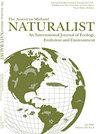长尾鼬在破碎农业景观中的栖息地利用
IF 0.6
4区 环境科学与生态学
Q4 Agricultural and Biological Sciences
引用次数: 0
摘要
摘要长尾鼬(Mustela frenata)在北美的地理范围很广,除了一些沙漠生态系统外,还能忍受各种各样的生活区。然而,尽管长尾鼬的数量在这些景观中可能正在下降,但人们对它们在农业破碎的景观中的栖息地利用知之甚少。在1998-2000年的冬春末和夏秋末,我们通过无线电遥测技术监测了11只长尾鼬(7只雄性,4只雌性),以研究印第安纳州一片因农业而破碎的景观中栖息地的使用模式。长尾鼬表现出依赖于尺度的生境选择模式(即景观内的生境选择和栖息地范围内的生境选择)。黄鼠狼选择森林斑块、篱笆和排水沟,而避开农田。森林斑块和栅栏为其他捕食者提供了合适的洞穴和避难所,并展示了丰富多样的猎物群落。排水沟提供了活动通道和独立的饮用水。与其他食肉动物相比,长尾鼬的资源选择模式和有限的扩散能力与长尾鼬对农业引起的栖息地破碎化敏感的观点是一致的。本文章由计算机程序翻译,如有差异,请以英文原文为准。
Habitat use by Long-tailed Weasels in a Fragmented Agricultural Landscape
Abstract. Long-tailed weasels (Mustela frenata) have an extensive North American geographic range and tolerate a wide range of life zones, excluding some desert ecosystems. However, little is known of their habitat use in landscapes fragmented by agriculture, despite the fact that long-tailed weasel populations may be declining in these landscapes. During late winter-spring and late summer-autumn 1998–2000, we monitored 11 long-tailed weasels (seven males, four females) via radio telemetry to examine patterns of habitat use in an Indiana landscape fragmented by agriculture. Long-tailed weasels exhibited scale-dependent patterns of habitat selection (i.e., habitat selection within a landscape and selection of habitats within home ranges). Weasels selected forest patches, fencerows, and drainage ditches, whereas agricultural fields were avoided. Forest patches and fencerows provided suitable den sites and refuge cover from other predators and exhibited an abundant and diverse prey community. Drainage ditches provided movement corridors and access to free-standing, drinking water. The resource selection patterns and limited dispersal ability of long-tailed weasels compared to other carnivores are consistent with the notion that long-tailed weasels appear sensitive to agriculturally induced fragmentation of habitat.
求助全文
通过发布文献求助,成功后即可免费获取论文全文。
去求助
来源期刊

American Midland Naturalist
环境科学-生态学
CiteScore
1.20
自引率
0.00%
发文量
38
审稿时长
18-36 weeks
期刊介绍:
The American Midland Naturalist has been published for 90 years by the University of Notre Dame. The connotations of Midland and Naturalist have broadened and its geographic coverage now includes North America with occasional articles from other continents. The old image of naturalist has changed and the journal publishes what Charles Elton aptly termed "scientific natural history" including field and experimental biology. Its significance and breadth of coverage are evident in that the American Midland Naturalist is among the most frequently cited journals in publications on ecology, mammalogy, herpetology, ornithology, ichthyology, parasitology, aquatic and invertebrate biology and other biological disciplines.
 求助内容:
求助内容: 应助结果提醒方式:
应助结果提醒方式:


